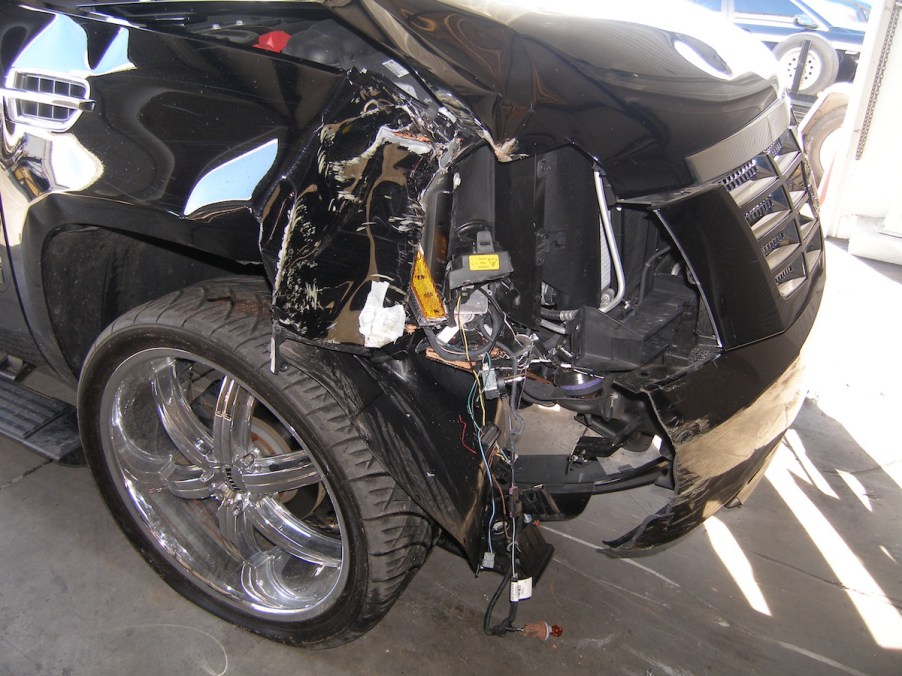
You’ll Feel Safe in These Luxury SUVs With the Lowest Death Rates Possible
When shopping for luxury SUVs, considerations such as price, available features, seating capacity, and performance are often at the top of a buyer’s checklist. The Insurance Institute for Highway Safety (IIHS) is known for the crash tests they perform on new automobiles annually. This crash test data often plays a role in choosing a vehicle.
Driver death rate
It is important to note that although these crash tests provide an important metric for safety, they only compare vehicles in the same class and typically measure how well a vehicle performs to standard measurable criteria. In what is perhaps a more informative indication of safety, IIHS pulls in data from the federal Fatality Analysis Reporting System and vehicle registration data from IHS Market to rate vehicles according to driver death rate. The driver death rate is a calculation involving the total number of registration years and the total number of deaths resulting from injuries sustained in the crash.
The IIHS driver death rate study, performed every three years since 1989, only focuses on driver deaths because every vehicle has a driver but there are often differing numbers of passengers involved. Other important notes about the study include the ability to compare all makes and models from luxury SUVs to sports cars and that larger vehicles perform better than smaller ones due to their size and weight absorbing more of the crash forces.
Driver death rate study
The 2017 IIHS driver death rate study reported an average of 36 deaths per million registered years. This continues an upward trend over the 2014 study reporting 30 deaths and 2011 reporting 28 deaths per million registered years.
Only seven vehicles had zero driver deaths in the 2017 study, four are luxury SUVs, one large SUV, a luxury sedan, and a small four-door car. Luxury SUVs perform well in this test because of two main factors. They have the size and weight to protect vehicle occupants in the event of a crash, and they typically have enhanced crash mitigation systems in place that are able to react to dangerous situations much faster than the driver can.
Luxury and large SUVs
All the vehicles listed here are tied for first place with zero driver deaths, so they are presented in alphabetical order within their category.
The midsize luxury SUV 2017 Infiniti QX60 earned an IIHS top safety pick for those models equipped with optional front crash prevention technology. It received “Good” or “Superior” ratings for all crash tests except for the small overlap front passenger-side test for which it received an “Acceptable” rating. It also received a “Poor” rating for its headlights.
The 2019 Land Rover Range Rover Evoque is a small luxury SUV. The Evoque has not been crash-tested in the United States but received a 5-star rating from Europe’s NCAP.
When equipped with optional front crash prevention and specific headlights, the luxury midsize 2017 Lexus NX 200t earns an IIHS top safety pick plus, IIHS’ top safety honor. All available crash tests received “Good” ratings, the front crash prevention system received an “Advanced” rating and the LED low beam/Halogen projector high beam headlight combination earned an “Acceptable” rating.
The 2017 Porsche Cayenne received a 5-star NCAP rating as a large off-road vehicle receiving high marks for all situations except rear-impact whiplash protection.
While not considered a luxury SUV, the 2017 GMC Yukon XL 1500 is definitely a large SUV. The National Highway Traffic Safety Administration (NHTSA) gives the 2017 Yukon XL 1500 a 4-star crash test rating. The Yukon earned 5 stars in side crash testing, 4 stars in front crashes, and only 3 stars in rollover resistance for the overall four-star rating.
The other two vehicles with zero driver deaths are the luxury Mercedes-Benz C-class sedan, and small, four-door Volkswagen Golf sedan.



